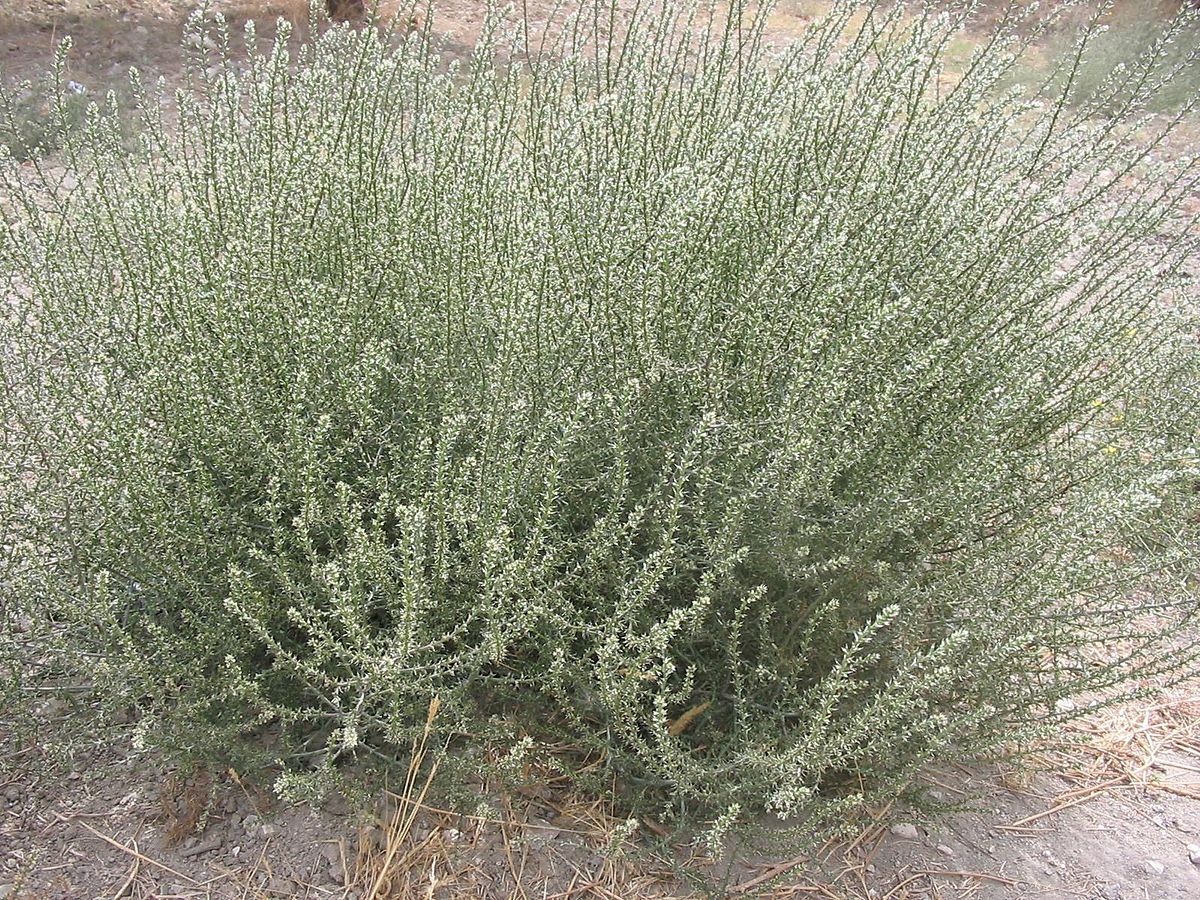Russian Thistle

Russian Thistle
(Salsola kali)
Priority: - Prevent / EDRR
Tags: Terrestrial
Identification and Reproduction
Identification:
- Russian thistle is an annual shurb that can grow up to 1.5 m tall.
- In its immature stages it grows erect and branched. Over time it will grow rounded and stems will start to tangle. At maturity shrub can reach over one meter in diameter.

- Depending on genetics and site conditions stems and leaves may be green, red or even striped.
- Leaves bear sharp spines. Young leaves are succulent and will mature to become leathery and rigid.
- Flowers form on the axil of the mature leaf, are pink, white or green and do not have petals.
Reproduction:
- Russian thistle reproduces by seed.
- Each plant can produce from 100 to 200,000 seeds in a growing season.
- As the plant matures it dries out and becomes brittle. Stems break easily in the wind and form tumbleweeds that help disperse seeds.
Habitat & Ecology
- Prefers sandy textured soils.
- High tolerance for salinity.
- Commonly found along beach edges, grasslands and desert communities.
- But is well adapted to a large variety of habitats. Can also be found on agricultural land, rangeland, abandoned fields, roadsides and coastal areas.
Impacts
Social:
- Although grazed when young, this plant becomes too spiny and woody for grazing livestock.
Ecological:
- As the seeds begin to mature the plant starts to die off, becoming hard and brittle. This poses as a fire hazard since stems are dry and woody.
- Outcompetes native species.
- Obstruct and limits access to stream channels.
Management
Prevention is a high priority for this species.
- Plant and maintain healthy ground cover to prevent the establishment of Russian thistle.
Mechanical/Manual Control:
- Young plants can be pulled and roots can be dug up.
- Hoe plants just below the ground level prior to seed set.
- Stems can be carefully cut prior to flower maturity.
- Repetitive mowing can help control Russian thistle, but note in some cases this may cause the plant to take low growth patterns.
- Be sure to wear thick gloves when physically removing the plant.
Chemical Control:
- Glyphosate has the greatest success with Russian thistle.
- Ensure you are applying before seed set.
- When the plant has become leathery and woody it may be diffucult to control infestations with herbicides.
- Be sure to read all herbicide labels prior to application.
Resources
For more details check out the Invasive Species Compendium datasheet on Salsola kali (common saltwort).
Header photo (Nanosanchez).



